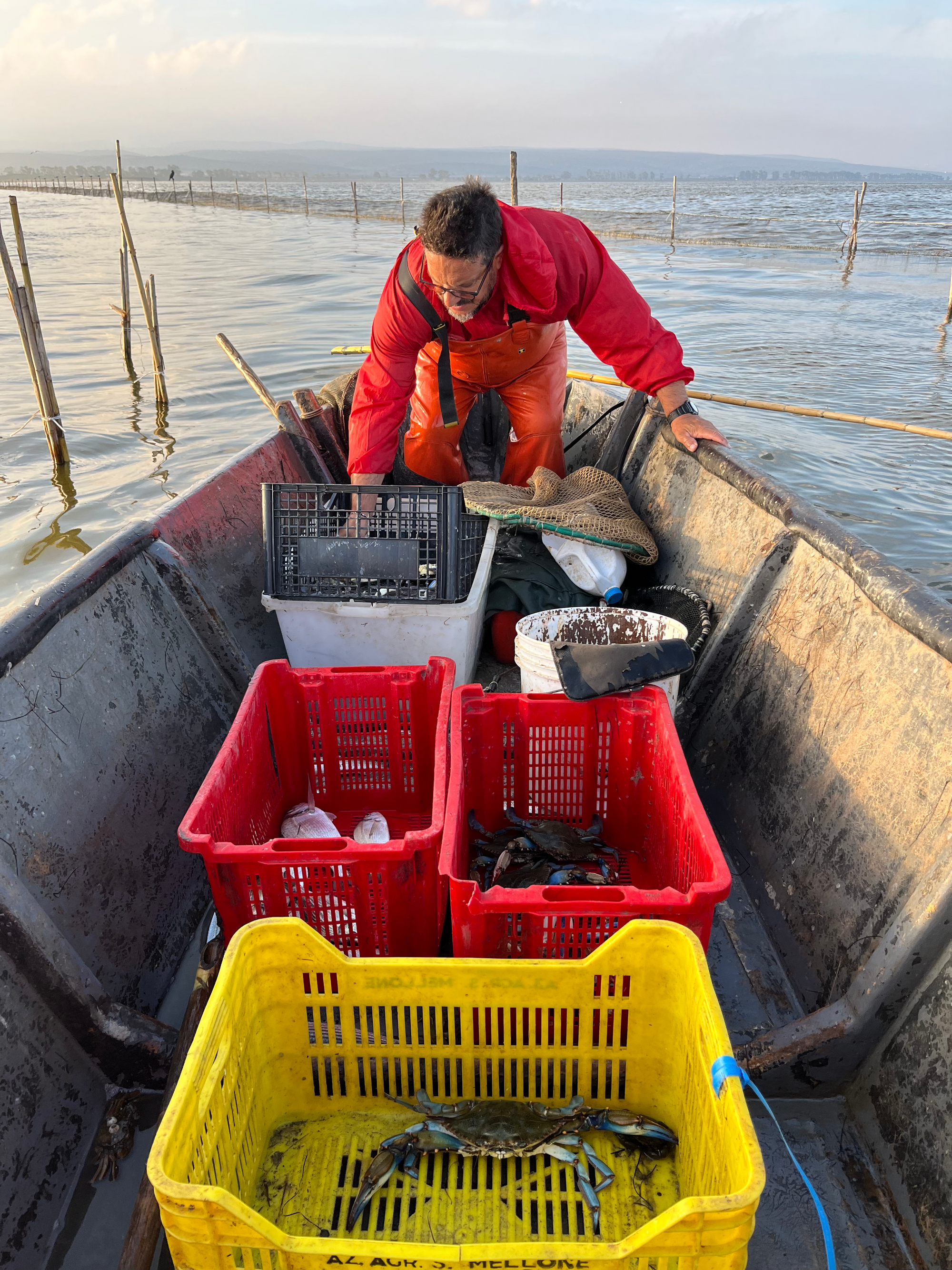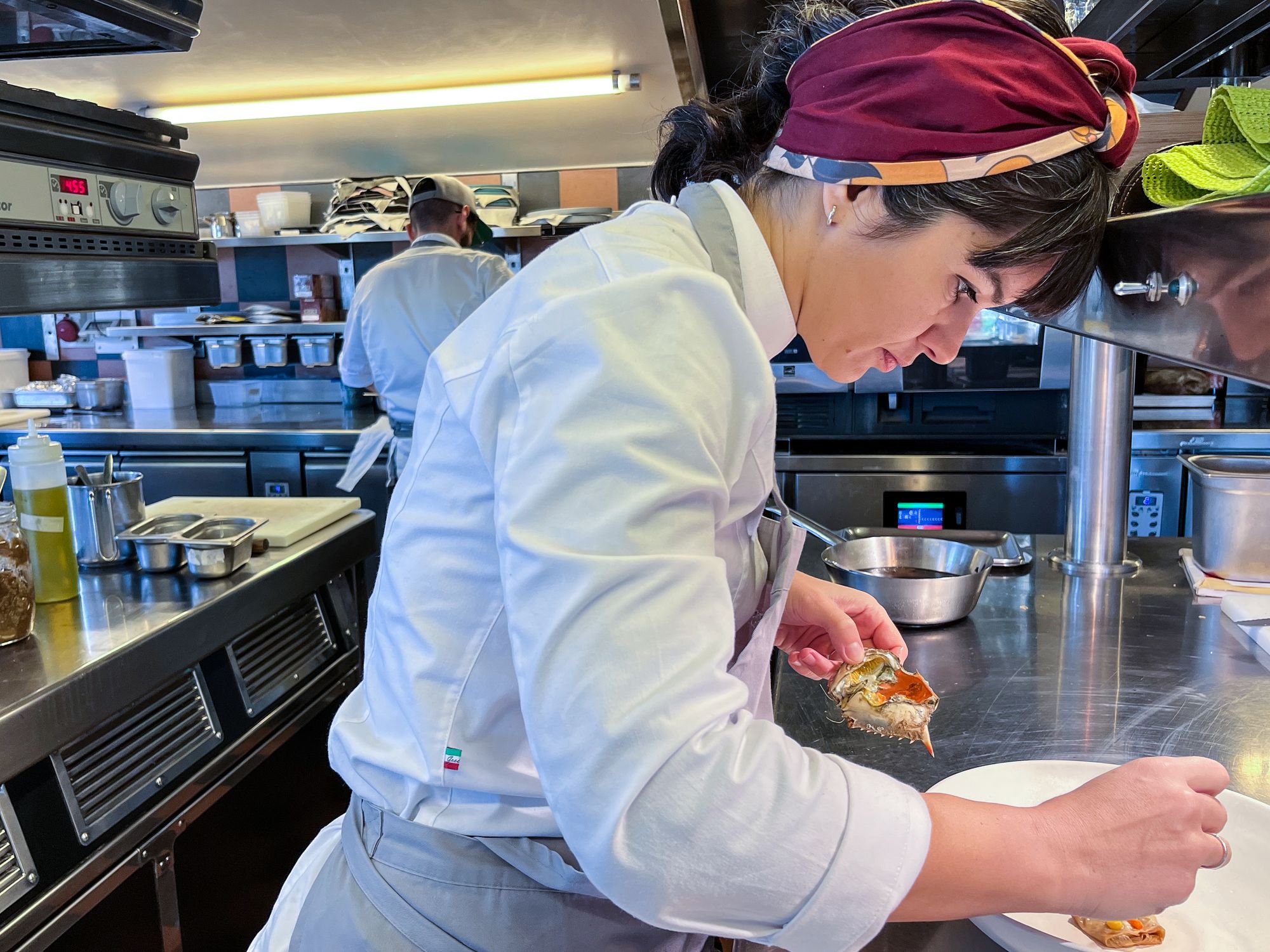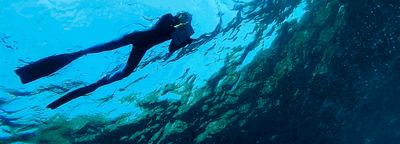- by Guia Baggi
- This story was first published by Mongabay on Mar. 23, 2023, and produced with the funding support of the Pulitzer Center.
- This past summer, the blue crab population boomed in Italy, and so has interest in the consumption of this exotic species (The New York Times).
- Chefs Chiara Pavan and Francesco Brutto have included new recipes based on blue crabs on their menus; and other chefs throughout Italy have added blue crab dishes to theirs, too. But the increased media attention has also led to higher market prices for this species.
- Since August, Mariscadoras and their business partner have shipped at least three containers of blue crab to the U.S. to increase fishing pressure on this exotic species in the Adriatic Sea.
- In South America, lionfish seems to have become as widespread as scientists expected it to be more than a decade ago (The Conversation).
- Susan Pasko and Jason Goldberg from the U.S. Fish and Wildlife Service, together with other researchers, have published another paper about efforts that use harvest as a means for invasive-species control from a multidisciplinary perspective, highlighting concerns and opportunities.
- Periklis Kleitou from the Cyprus-based Marine and Environmental Research Lab took part in a FAO-led workshop analyzing fishery management approaches to invasive species around the globe.
MAZZORBO, Italy — In the kitchen of a Michelin-starred restaurant, a dozen blue crabs await their fate in a deep stainless steel tray near the stove. Chefs Chiara Pavan and Francesco Brutto will use them to make blue crab soy-skin dumplings topped with marinated egg yolk and oregano, one of the signature dishes at their restaurant Venissa on Mazzorbo island in Italy’s Venice Lagoon.
Although the Atlantic blue crab (Callinectes sapidus) was uncommon in this part of the world until a few years ago, diners take to them easily: Their flesh is sweet, succulent and mellow. They have been on the restaurant’s menu since 2019, when Pavan and Brutto decided to ditch meat for ethical and environmental reasons.
Apart from the blue crab, the chef duo has also introduced rapa whelk (Rapana venosa) and other invasive marine species that have been messing up local ecosystems and fisheries. This year, for instance, they will be serving a dish based on the nonnative arc clam (genus Anadara) that has been spreading along the Adriatic coast.
“I’ve been here for seven years and in these seven years I’ve witnessed the population trends of the fish inhabiting the lagoon,” Pavan says, explaining the idea shaping her cooking. She likes to experiment with species that people are not familiar with but are locally abundant. “The blue crab is a real pest in this area,” she says. “It’s at the top of the food chain. So … it should be eaten to rebalance things.”

Catching blue crabs in Lesina Lagoon, Italy (Guia Baggi).
At the crossroads of the Indo-Pacific and the Atlantic oceans, the Mediterranean Sea is currently home to more than 750 nonnative species. Some might have arrived in ships’ ballast waters; others might have been released from aquariums. Some were introduced for aquaculture purposes. Since 1869, the human-made Suez Canal has represented the major pathway for the arrival of species that otherwise would probably have never reached this semi-enclosed sea. In the past two decades, warming waters have helped those that thrive at higher temperatures find welcoming conditions.
Although accurate data on their abundance are lacking, since late summer months of 2022, sightings of blue crabs along the Italian coastline have crowded Facebook groups dedicated to exotic species. Most comments under these posts argue that eating the crabs is the best way to deal with this highly fecund and voracious species. In fact, it is well appreciated along the western Atlantic, where it is native and makes up an important fishery. But some scientists warn that the slogan “If you can’t beat ’em, eat ’em” doesn’t always offer a straightforward solution because it involves balancing so many considerations: fishers’ interests, markets, government policy and conservation.
“Harvest has potential but it’s not a magic bullet,” says Jason Goldberg, a biologist with the Science Applications program of the U.S. Fish and Wildlife Service (FWS) who, in 2014, co-authored a popular paper on the subject. “It requires the same careful planning as any other management tool.”
Some important lessons may come from the western Atlantic, an ocean away from the Mediterranean. Authorities there have pushed to create fishing pressure on lionfish (genus Pterois), delicate-looking but venomous Indo-Pacific predators that have wreaked havoc on local food webs. Among the first efforts, in 2010 the U.S. National Oceanic and Atmospheric Administration launched “Eat Lionfish,” an awareness campaign bringing together fishers, wholesalers and chefs. Similar initiatives have sprung up across the Gulf of Mexico and the Caribbean.
Studies show that one of the most successful endeavors to reduce lionfish numbers took place on the island of Cozumel, Mexico. There, a fishers’ cooperative embraced the mission, targeting lionfish and selling them to local and U.S. restaurants. Over three years, scientists saw a 60 percent decrease in the species along the coral reef. But as their new quarry declined, the market that fishers had built vanished with it. Luckily, the Cozumel cooperative could count on the spiny lobster and other steadier catches, so its members could remain in business. But they missed the additional income, especially during the lobster seasonal closure. Somehow the people who engaged the most were economically damaged by their own success, two recent studies point out.
Luis Malpica-Cruz, an oceanographer and marine ecologist at the Oceanographic Research Institute of the Autonomous University of Baja California, Mexico, who co-authored the studies, stresses the importance of being transparent with fishers from the start about the goal of targeting a nonnative species. Whether it’s to eradicate the invader or to create an economic alternative for local people, stakeholders should be well aware of it. In the Cozumel case, the goal was not clear, or at least it was not clearly communicated to the fishers, he says.
To establish such a goal, managers need to ponder damages versus benefits. Not all exotic species affect ecosystems negatively. If a species is beneficial for the economy while causing little or no harm to the environment, managers may choose a sustainable fishery approach to keep the species at healthy levels over the long term.
But for invasive species like lionfish whose damage to the ecosystem can far outweigh any benefits from fishing it, there are few options other than an economically unsustainable fishery that aims to reduce its population as much as possible. “So you have to create another way to sustain it [the fishery] in the long term,” Malpica-Cruz says. Otherwise the target species will bounce back once the pressure softens, or people might actually attempt to encourage the new resource to stay.

Some researchers have theorized an “optimum yield,” an alternative ideal catch size to the traditional “maximum sustainable yield” normally used in managing commercial species. Such a target aims to keep an invasive population high enough to benefit fishers economically over the long term but low enough to minimize environmental damage.
According to Periklis Kleitou, a researcher at the Marine and Environmental Research Lab consultancy in Cyprus, such a goal requires more thorough testing before being widely promoted, as it might be difficult to realize in the vast and complex marine environment. Kleitou recently co-authored a paper proposing reforms to the way authorities manage fisheries for nonnative species, focusing on the Mediterranean.
In Cyprus, exotic species make up 20-50 percent of fishers’ catches, the lionfish among them. It’s not just a matter of a few species anymore. Eradicating them is all but impossible. So it’s also about adaptation, according to Kleitou. “We need to be cautious and careful on what we want to achieve, and we need to assess carefully all impacts of the species … in a holistic approach,” he says.
To determine the best strategy, managers must consider many factors, from socio-economic and public health considerations to ecology and biology. “Each species is going to have different characteristics,” Susan Pasko, executive secretary of FWS’s Aquatic Nuisance Species Task Force, who co-authored the 2014 paper with Goldberg, says. “So in order to be a success … it really comes down to … understanding the biology of the species.”
According to Kleitou, for instance, for the two blue crab species (C. sapidus and Portunus segnis) that for the past decade have been settling throughout the Mediterranean, a thorough analysis of the trade-offs has not been made yet. Thus, greenlighting an economically sustainable fishery that would keep their numbers up remains questionable, he says, because it could turn out to be environmentally unsustainable.
This type of scrutiny is currently happening within the U.N. Food and Agriculture Organization’s General Fisheries Commission for the Mediterranean (GFCM), under a program to better understand the blue crabs’ distribution and their social and ecological impacts. GFCM is aiming to share its scientific results with policymakers by the end of 2023 and again in 2024.
Meanwhile, some Mediterranean countries have already begun initiatives to harvest the blue crabs, in some cases leaning toward the economically sustainable fishery end of the management spectrum. “In Spain they are starting to have an important local market,” the recently appointed GFCM executive secretary Miguel Bernal says. “In other areas, such as in Tunisia, part of the catches is being exported. … There is now a dedicated fishery and processing industry for the blue crab.”

In Italy, too, the Atlantic blue crab has entered the local market (Editor's note: the following paragraphs refer to the situation before this past summer). It’s sold in the main wholesale fish markets and occasionally served in restaurants, even ones less environmentally conscious than Venissa. Researchers often promote its consumption during educational and cooking events, in order to raise awareness and possibly increase its market value.
There’s even a startup dedicated to marketing nonindigenous species — mostly the Atlantic blue crab for now. Founded in 2021 by five young women including a marine biologist, Mariscadoras has partnered with a seafood processing firm to create a line of ready-to-go blue crab meat portions and pasta sauces that it recently launched in supermarkets. Mariscadoras and Pavan, Venissa’s chef, often share research and recipes and attend cooking shows and other events together to introduce this crab species to consumers. Their approach aims to be flexible and adaptive to whatever edible exotic species is currently plaguing local ecosystems.
One of the papers Malpica-Cruz co-authored suggests a similar perspective to raise the price fishers receive for lionfish in order to incentivize the now-economically unsustainable lionfish fishery: a label that says by sourcing or eating this invasive species you are helping the environment. Building on that, the oceanographer tells Mongabay that such a label could target high-end consumers and carry an extra price that could go to a fund to help sustain fishers who target lionfish and other marine invaders.
Above all, the idea is to get the balance right, so fishing for invasive species can benefit both the fishers and the sea.
Top image: An Atlantic blue crabs, Callinectes sapidus (Feng Yu / Alamy Foto Stock).
Editor's note: This story is part of the series "The New Inhabitants of Our Sea," which intends to offer a preview of the magazine we have in mind. If you would like to stay updated on the evolution of our project, subscribe to Lapilli.


